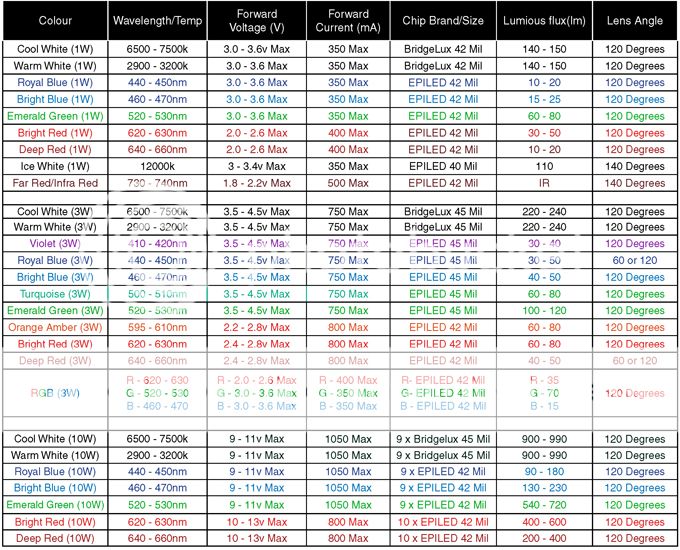heckler73
Well-Known Member
Okay...it's time to take this thread to a higher level.
So, a LUX meter is fine and dandy, but wouldn't it be nice to have something closer to this magical PAR crap people fawn over. Beyond that, how about a calibrated McCree-Inada meter?
For review, what are we working with, and what's the goal ?

The BH1750 spectrum is in green, and the McCree-Inada curve in purple. Now while the general shape of the BH1750 is fairly nice for the PAR rectangle, it is missing the outer parts near 400 and 700nm. What can one do in the face of that? It would be nice to have a way to measure those parts and sum them with the BH1750, right? Then one could be working with a tool which is closer to a LiCor head without the expense.
Well...LEDs to the rescue. They are quasi-solar cells after all:

What this collage shows is the effect of light on the voltage output of LEDs, in reverse.
The lights being tested consist of two 430nm blues with one warm white (3000K IIRC) running at ~500mA.
The LEDs exposed to the light mix consist of 3 430nm chips. As one should be able to to see (although some people are asleep at the switch in other sections, granted it is early morning ), the 430nm "receivers" are picking up a discernible and far from negligible voltage.
), the 430nm "receivers" are picking up a discernible and far from negligible voltage.
So there is the basic premise. Bolster the BH1750 with LEDs as side-receivers, calibrate them to known devices (like the LEDs themselves), and then apply the necessary scalars or powers in the Arduino code to spit out a summed approximation of whatever normalized spectrum desired (be it PAR or McCree, etc...). It's possible to turn it into a menu item. Measure PAR, McCree, BBR, and whatever else the imagination can cook up into code.
I suspect the calibration part is going to be the most tedious, requiring several runs with different LEDs just to get a basic data set from which to define an I-V characteristics curve WRT photon density...
So, a LUX meter is fine and dandy, but wouldn't it be nice to have something closer to this magical PAR crap people fawn over. Beyond that, how about a calibrated McCree-Inada meter?
For review, what are we working with, and what's the goal ?

The BH1750 spectrum is in green, and the McCree-Inada curve in purple. Now while the general shape of the BH1750 is fairly nice for the PAR rectangle, it is missing the outer parts near 400 and 700nm. What can one do in the face of that? It would be nice to have a way to measure those parts and sum them with the BH1750, right? Then one could be working with a tool which is closer to a LiCor head without the expense.
Well...LEDs to the rescue. They are quasi-solar cells after all:

What this collage shows is the effect of light on the voltage output of LEDs, in reverse.
The lights being tested consist of two 430nm blues with one warm white (3000K IIRC) running at ~500mA.
The LEDs exposed to the light mix consist of 3 430nm chips. As one should be able to to see (although some people are asleep at the switch in other sections, granted it is early morning
So there is the basic premise. Bolster the BH1750 with LEDs as side-receivers, calibrate them to known devices (like the LEDs themselves), and then apply the necessary scalars or powers in the Arduino code to spit out a summed approximation of whatever normalized spectrum desired (be it PAR or McCree, etc...). It's possible to turn it into a menu item. Measure PAR, McCree, BBR, and whatever else the imagination can cook up into code.
I suspect the calibration part is going to be the most tedious, requiring several runs with different LEDs just to get a basic data set from which to define an I-V characteristics curve WRT photon density...
Last edited:











